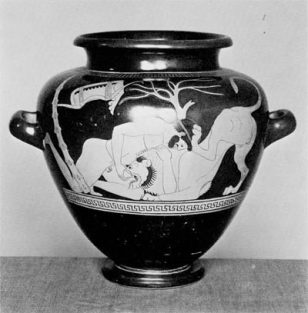Volume 21 / Number 4
1979
Special Edition: Mediterranean Market Trade in Classical Times
On The Cover: Greatly enlarged lion head terminal of the Achaemenid gold bracelet from Gordion (inventory # S 1).

Vol. 21 / No. 4
By: Margaret Thompson
Hoards and Overstrikes: The Numismatic Evidence
Coins contribute little to a discussion of Mediterranean trade in the 6th century, for there are no relevant hoards which […]
View Article
Vol. 21 / No. 4
By: John Boardman
The Athenian Pottery Trade: The Classical Period
Athenian pottery traveled far, and often in quantity. The limits of distribution range from Spain through central Europe, South Russia, […]
View Article
Vol. 21 / No. 4
By: Martin Biddle
New Directions – Summer 1979: The Director Writes
An important—perhaps too important—way of judging a museum’s success or failure is to look at the number of its visitors. […]
View Article
Vol. 21 / No. 4
By: Cynthia Jones Eiseman
The Mediterranean Market: Aspects of Trade in Classical Times
Introduction In this issue of Expedition we publish the proceedings of a symposium entitled “The Mediterranean Market: Aspects of Trade […]
View Article
Vol. 21 / No. 4
By: G. Kenneth Sams
Imports at Gordion: Lydian and Persian Periods
Sometime during the first quarter of the 7th century, invading marauders known to history as the Kimmerians brought to an […]
View ArticleVol. 21 / No. 4
By: Peter S. Wells and Larissa Bonfante
West-Central Europe and the Mediterranean: The Decline in Trade in the Fifth Century B.C.
The Problem Massalia, the Greek city on the site of modern Marseille, was founded about 600 B.C. by Ionian Greeks […]
View ArticleVol. 21 / No. 4
University Museum Announcements
Appointments The Museum is proud to announce the appointment of Spyros Iakovidis, Professor of Classical Archaeology in the University of […]
View Article
Vol. 21 / No. 4
By: Lionel Casson
Traders and Trading: Classical Athens
In the 5th and 4th centuries B.C. Athens fed its population-150,000 by conservative estimates—chiefly on grain imported from south Russia, […]
View Article